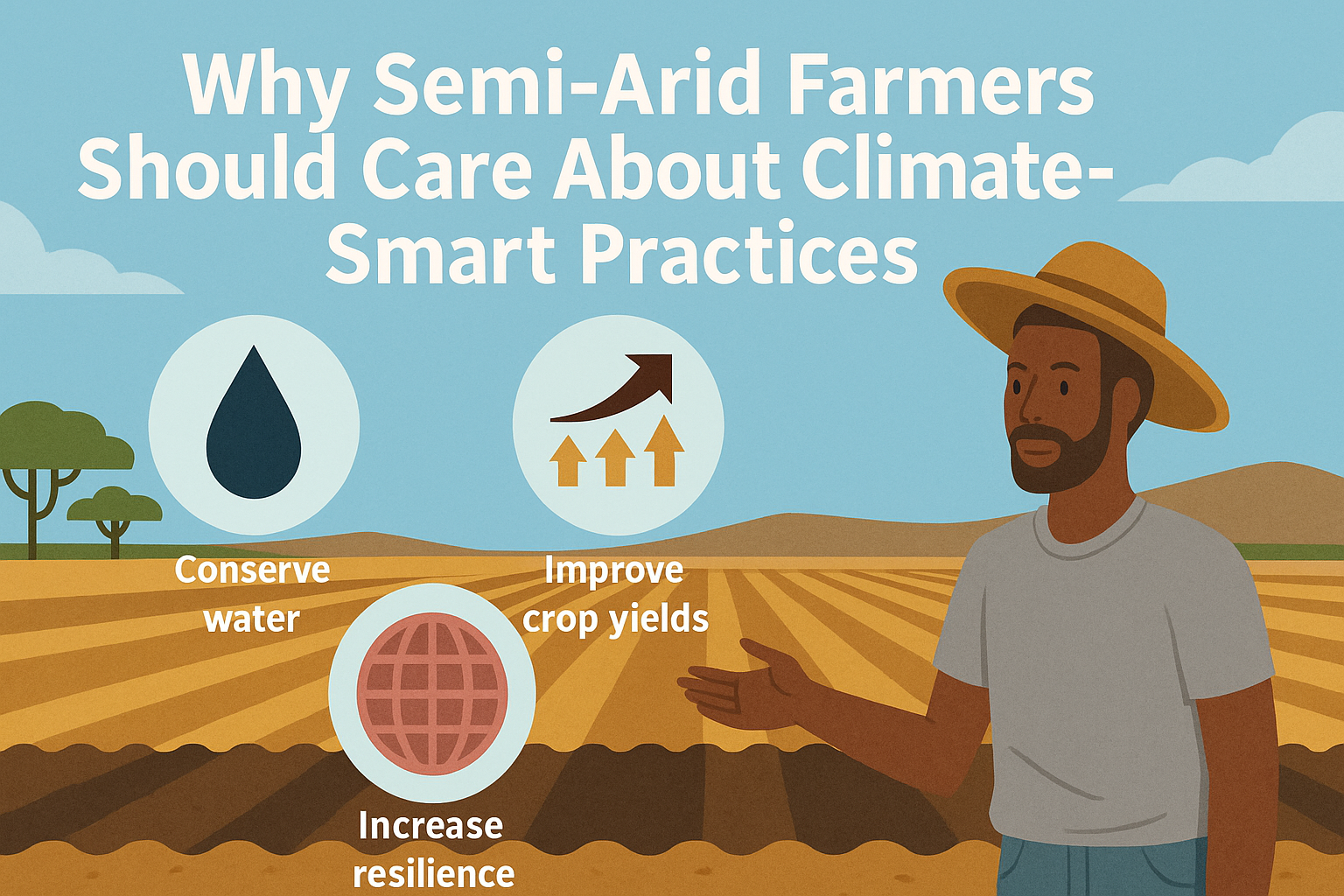
Farming in semi-arid regions has never been easy. Irregular rainfall, long dry spells, and extreme weather swings can quickly turn a good season into a tough one. But with climate change making these patterns more unpredictable, farmers in dry zones need more than luck to stay resilient — they need smart strategies.
That’s where Climate-Smart Management Practices (CSMPs) come in. These aren’t just trendy terms — they’re practical solutions that help farmers stay productive, conserve resources, and protect the land for the future.
So why should semi-arid farmers care? Here’s why it matters now more than ever.
1. Water Is Life — and CSMPs Help You Keep It
Water is the biggest limiting factor in dryland agriculture. CSMPs like cover cropping, reduced tillage, and compost application can help increase soil organic matter, which improves the soil’s ability to hold water — acting like a sponge during drought.
More moisture in the root zone means less stress on your crops, even when the rain is late or light.
2. Soils Are Under Threat — CSMPs Protect Them
Semi-arid soils are especially vulnerable to wind and water erosion. When bare, dry soils are left unprotected, topsoil blows away — along with valuable nutrients. Practices like planting cover crops, maintaining ground cover, and rotating crops help build soil structure and reduce erosion.
Building soil organic carbon also helps keep your fields fertile and productive for the long haul.
3. Yields Are More Stable Over Time
You might not see a big jump in yield right away — but CSMPs help stabilize productivity over time. For instance, adding compost or growing legumes can improve soil fertility, which boosts crop health in poor years. Rotating crops and minimizing tillage also reduce disease and weed pressure.
In a system that’s vulnerable to every weather swing, stability is gold.
4. You Save Inputs and Reduce Costs
By improving nutrient cycling and water retention, CSMPs can help reduce your dependence on synthetic fertilizers and irrigation. Over time, that means saving money — and reducing your exposure to price shocks and input shortages.
It’s not just sustainable farming — it’s smart business.
5. You’re Part of the Climate Solution
Farming practices that build soil carbon also pull carbon dioxide (CO₂) out of the atmosphere, making agriculture part of the solution to
climate change. This matters not just for the planet, but for future access to carbon markets, incentive programs, or climate-related funding opportunities.
Adaptation Is the New Normal
Semi-arid farmers have always been adaptive, resourceful, and resilient. Climate-smart practices simply build on that legacy, using both traditional knowledge and modern science to help you thrive in tough conditions.
By caring for your soil, improving efficiency, and planning for extremes, you’re not just surviving — you’re securing your farm’s future.
Acknowledgment
This article is part of a project funded by the Western Sustainable Agriculture Research and Education (SARE) Program under project number GW25-003.



